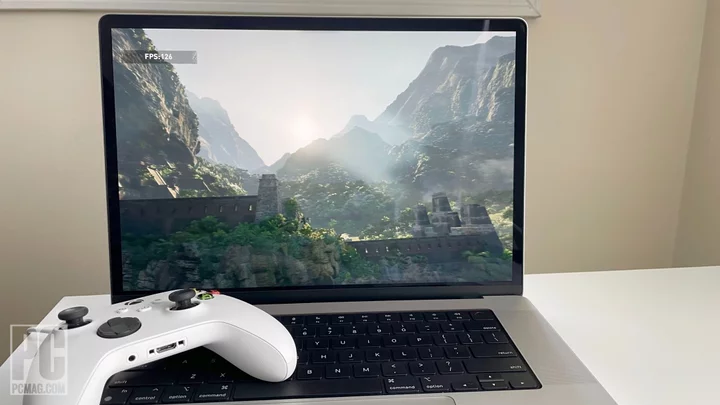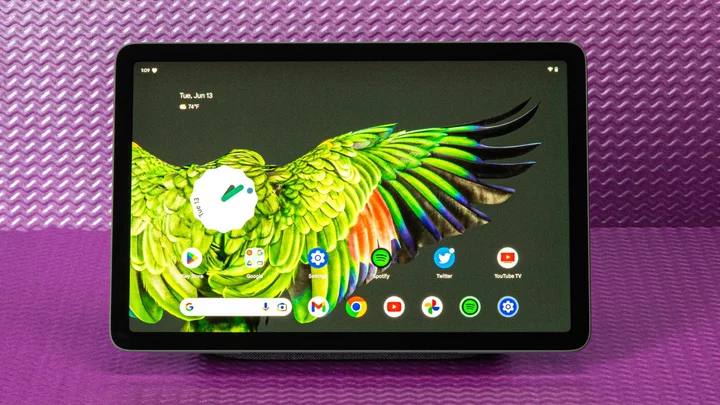
Watch a Newly-Discovered Mud Volcano Erupt Underwater
Scientists recently recorded an underwater mud volcano—the second discovered in Norwegian waters.
2023-05-12 07:23

Xylem, Lorentz Partner to Accelerate Deployment of Solar-Powered Pumping Solutions
WASHINGTON--(BUSINESS WIRE)--Sep 20, 2023--
2023-09-20 19:46

Wind River VxWorks Serves as Software Foundation for Astroscale Sustainable Space Systems
ALAMEDA, Calif.--(BUSINESS WIRE)--Jul 19, 2023--
2023-07-19 21:27

Buy Oracle Stock, Analyst Says. ‘The Math Is Working’ in Company’s Favor.
Evercore's Kirk Materne and team now rate Oracle's stock at Outperform as opposed to In Line or Neutral earlier.
2023-10-09 21:29

Warning over criminals using digital switchover to scam vulnerable people
Criminals are exploiting the analogue to digital switchover in the UK’s telephone network to scam elderly and vulnerable people, councils have warned. The Local Government Association (LGA) said it had issued the warning after becoming concerned the transition was creating new opportunities for scammers. Specifically, the LGA said it was concerned about the around 1.8 million people who use healthcare telephony devices, and which may need changing as part of the digital switchover. It said it had seen recent reports of scammers who call residents with healthcare devices and claim the resident needs to hand over bank details as part of the switchover, or they will be disconnected. As the digital switchover date approaches, sadly we fear that further cases will arise Councillor Heather Kidd, from the LGA The digital switchover will see most UK telephone providers move their customers from old analogue landlines to new, upgraded services which use digital technology, with the changes taking place up to 2025. Councillor Heather Kidd, chair of the LGA’s safer and stronger communities board, said: “We are very concerned by a rise in criminals taking advantage of the digital switchover to trick vulnerable residents into giving out personal information such as their bank details. “As the digital switchover date approaches, sadly we fear that further cases will arise. “Councils will always act swiftly with the police where any incidents are reported, but we also urge people to be vigilant and help to raise awareness of this crime. “The digital switchover is free of charge and residents should be aware that councils and their home care alarm providers or contractors will never ask for personal or financial information over the phone.” The LGA said anyone who is the victim of a scam or fraudulent activity should report it to Action Fraud as well as their local trading standards team. Read More Charity boss speaks out over ‘traumatic’ encounter with royal aide Ukraine war’s heaviest fight rages in east - follow live
2023-09-15 21:57

Kenya suspends eyeball-scanning crypto worldcoin
Kenya has suspended a controversial cryptocurrency launched by the creator of ChatGPT over concerns for public safety. Worldcoin, founded by OpenAI boss Sam Altman, requires users to scan their eyeballs in order to receive a free share of the crypto token WLD More than 350,000 people have already signed up in Kenya, according to local reports, representing a significant portion of the roughly 2 million users worldwide. Interior minister Kithure Kindiki said investigations were underway into how Worldcoin intends to use people’s data. “Relevant security, financial services and data protection agencies have commenced inquiries and investigations to establish the authenticity and legality of the aforesaid activities,” Mr Kindiki said. Worldcoin claims that biometric data obtained during the signup process is only used to verify a person’s “unique personhood” and is not linked to any individual’s identity. “Worldcoin remains committed to providing an inclusive, privacy-preserving, decentralised on-ramp to the global digital economy and looks forward to resuming its services in Kenya while working closely with local regulators and other stakeholders,” the company said in a statement. Iris-scanning orbs are currently operating in 35 cities across 20 countries, according to Worldcoin, including in London, Paris and New York. Before Kenya announced the suspension, large crowds that formed in Nairobi at Worldcoin signup stations had been termed a “security risk”. Those who signed up received a share worth roughly $50 (£40), with Worldcoin claiming the project could eventually lead to a universal basic income. The WLD crypto token saw its price surge more than 50 per cent shortly after its launch last week, bucking broader market trends that have seen bitcoin and other leading cryptocurrencies dip in price during the same period. Cryptocurrency experts have described the project as both “outlandish” and “revolutionary” for its unique way to differentiate humans from AI bots, however digital rights lawyers warn that it poses a major challenge for regulators. “The launch of Worldcoin is a serious concern for data-protection and crypto regulatory bodies, and demonstrates the urgent need for cross sector and cross border regulation,”Richard Cannon, Partner at Stokoe Partnership Solicitors, told The Independent. “Worldcoin claims that once its systems are optimised it will anonymise and destroy users’ biometric data, but are yet to provide clarity regarding when this will happen, and have given no indication as to how the data is safely and securely stored.” Read More ChatGPT creator launches bitcoin rival that scans people’s eyeballs
2023-08-03 19:23

The Best DSLR and Mirrorless Cameras for 2023
If your smartphone camera isn't cutting it any longer, you should consider switching to an
2023-07-29 04:19

Stocks Poised to Fall
The Federal Open Market Committee will release the minutes from its early-May monetary-policy meeting, which will be closely scrutinized for clues about when officials might pause interest-rate increases.
2023-05-22 06:48

Fortnite Chapter 4 Season 3 Map: New POIs
The Fortnite Chapter 4 Season 3 map contains three new POIs, including Rumble Ruins, that bring a jungle biome to the Battle Royale.
2023-06-09 23:17

Stellantis CEO’s Relentlessness Reemerges as Car Dynamics Shift
In Italy, Stellantis NV is cutting jobs and being accused of skimping on janitorial work. In the US,
2023-05-25 19:19

Steam to Drop Support for Older MacOS Versions, and With It 32-Bit Games
It's the end of an era, at least for Mac gamers. On Feb. 15, 2024,
2023-12-02 01:24

Experts say introduce these eight changes to extend your life
Eight simple lifestyle changes could add more than 20 years to your life, research suggests. According to a study, presented at the annual meeting of the American Society for Nutrition in Boston, making minor changes even if you are already middle aged could pay massive dividends when it comes to extending your life. “Our research findings suggest that adopting a healthy lifestyle is important for both public health and personal wellness,” said Xuan-Mai T Nguyen, a health science specialist involved in the work at the US Department of Veteran Affairs. “The earlier the better, but even if you only make a small change in your 40s, 50s, or 60s, it still is beneficial,” she added. So what are the lifestyle changes? Sign up to our free Indy100 weekly newsletter They are: Eat well. Avoid cigarettes. Get a good night’s sleep. Be physically active. Manage stress. Avoid binge drinking. Be free from opioid addiction. Have positive social relationships. Who knew stopping smoking was so good for you?... The research drew on data from questionnaires and medical records collected between 2011 and 2019. The records covered more than 700,000 US veterans aged from 40 to 99 who were enrolled in the Veterans Affairs’ Million Veteran Program. “Men and women who adopted eight therapeutic lifestyle factors could gain 23.7 or 22.6 years of life expectancy, respectively, at age 40 years compared to those with no adopted lifestyle factors,” the authors write. However, as the study was done through observation, the work cannot prove a causal link between the factors identified and differences in lifespan. Have your say in our news democracy. Click the upvote icon at the top of the page to help raise this article through the indy100 rankings.
2023-07-25 17:16
You Might Like...

South Africa Says It Can Raise $60 Billion for Its Transition to Green Energy

Is xQc living at Poke's house? Kick streamer explains housing situation amid ongoing relationship drama: 'I had no options'

Microsoft to offer some free security products after criticism

Cordoniq Takes Home The Gold in 2023 Globee Awards for Information Technology

Crypto lender Celsius sends bankruptcy plan to creditor vote

Canadian Bank and Credit Card Apps Slow to Include Personal Financial Management Tools, J.D. Power Finds

Google's Pixel Tablet is fine, but the speaker dock changes everything

Occidental buys carbon air capture tech firm for $1.1 billion
